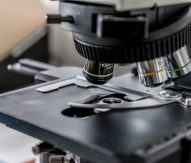
H2020 boosts energy harvesting
Dr Yang Bai and co-workers from the Microelectronics Research Unit, University of Oulu, Finland, have presented a perovskite-based ceramic material which is able to collect three ambient energy sources and convert them to electricity.
Energies which are normally wasted can be collected and converted to electricity, and with this could potentially help to power portable and wearable devices, from biometric sensors to smart watches. This technology is called energy harvesting (EH).
The research – funded by Horizon 2020 under the Marie Skłodowska-Curie Actions – discovered a single perovskite material called KNBNNO, which is able to harness three forms of energy simultaneously.
KNBNNO is synthesised by doping a sufficient amount of BNNO – a perovskite with oxygen vacancies present in its microstructure – into KNN – a widely used lead-free material which exhibits positive piezoelectric and pyroelectric properties.
Experiments revealed that KNBNNO has a narrow band gap which can induce positive photovoltaic properties which have the ability to harvest sunlight.
KNBNNO’s 3-in-1 property has outweighed all other counterpart materials, including silicon-based solar cells and conventional piezoelectric/pyroelectric materials – PZT.
The discovery is a large development in both fields of narrow band gap semiconductors and strong ferroelectric. A material was considered difficult to yield both good properties from them; however, it has now been proved practical.
A future application of the material could be its use in supplementing the batteries of electronic devices, subsequently improving energy efficiency and reducing how often the batteries need to be recharged.
Moreover, multi-energy harvesting may mean that in the future plug-in charging may no longer be required for gadgets, and therefore batteries for small devices could become obsolete.




